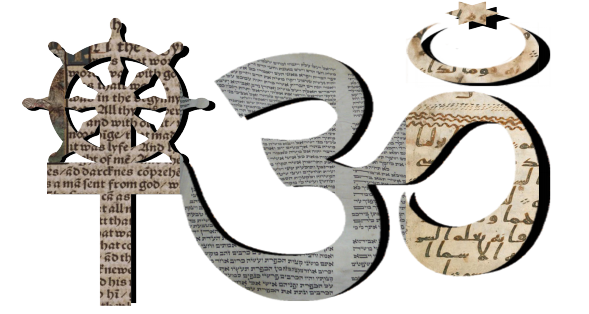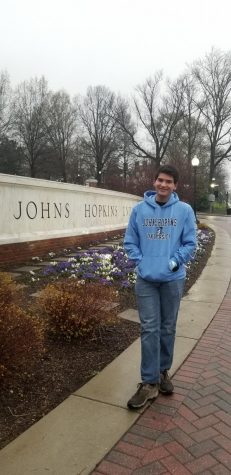Evanston: a community of faiths
December 13, 2019
As winter begins, the holiday spirit takes full form across the country, bringing self-examinations of religion and how people balance their religious and secular lives. The Evanstonian has dedicated this piece to highlighting the religious diversity at ETHS and discussing how Evanston views religion.
Evanston’s Religious Diversity:
Evanston is rooted in religious tradition–founded by Methodist leaders in the 1850s, the religious element of our community has evolved ever since, changing with the demographics of the town unto the present day.
“ Most people on this planet are theists; most people on this planet believe in an intervening deity and guess what, it will probably always be that way,” history teacher Kamasi Hill, who identifies as agnostic, said.
While religion affects identity, it often takes a backseat in discussions to aspects such as race or gender. However, it cannot be overlooked when fully analyzing a community.
“[Islam] plays a role in many aspects of my life if not every aspect, from the ways that really stick out to people like how I dress or when people walk in and find me on the floor praying to just trying to smile more,” history teacher Yosra Yehia, who identifies as a Muslima, said.
While there are those, such as Yehia, who openly display their faith, there are others who implement religious virtues in less obvious ways, such as by doing charitable work or community service.
“Some of the values, treat others the way you want to be treated, I still feel that I use that to this day, and I still go to mass…. [The Bible] relates to things happening in my life, and I’ll use it,” junior Mary Henthorn, who identifies as Catholic, said.
According to CityData, Evanston is predominantly Christian, with Catholics making up the largest subsect; however, it contains communities of Jews, Muslims, Baha’i, Hindus and many other faiths. This makes Evanston more religiously diverse than most US communities according to PewResearch Center, which indicates most US communities, particularly in rural America, are predominantly Protestant Christian, with other faiths comprising less than 1 percent of the population.
However, despite this diversity, some feel that there is a lack of open communication between religious groups, particularly when those groups exist in isolation.
“It’s a big change from [St. A’s where] everyone [is] being taught the same thing to a group with much more variety in beliefs. You realize how much you’re missing in the input of opinions and beliefs, and it makes for a much better conversation,” Henthorn said.
While there may not be interfaith communication, ETHS brings together students of all faiths, creating a new space for religious expression.
The Community Within:
The religious diversity of Evanston extends into ETHS, creating a culture that many view as accepting of religious differences and that allows students to expand spiritual borders.
“No one has ever made me feel like I made them feel uncomfortable,teachers and students alike, honestly,” Yehia said. “What I have noticed is that people have a lot of questions, but I do think those questions come from a really good place.”
Many of these questions emerge from classroom discussions around religion, such as in the freshman humanities curriculum.
“We discuss religion because we teach history,” Hill said. “So we’ll teach you about Islam, Buddhism and Taoism, Confucianism, Christianity and Judaism. We teach about the role and the impact that religion has had in the world…. [But] we don’t talk about faith, and we shouldn’t. Faith is about your respective tradition and community, and it does not belong in the classroom or to school as a topic of discussion.”
However, some students feel as though this education doesn’t facilitate proper discussions and is merely a cursory overview as mandated in district curriculums.
“[Religion] is mostly nonexistent [in class discussions],” junior Gabe Karsh, who identifies as Jewish, said. “It’s occasionally mentioned as part of a larger historical context, but it’s not like religion comes up everyday for its own merits.”
Outside the classroom, there are additional spaces where questions of faith can be answered, like the Christian Catalyst Club, sponsored by math teacher Jaime Clifton.
“We’ll meet and we’ll just talk about deep issues from a Christian perspective,” Clifton said. “Sometimes we’ll talk about the meaning of life, or your relationship with your parents, or what happens after you die, or, like did Jesus exist, things like that. This is just a place for people to explore, and it’s healthy to think about deep things.”
Safe spaces for deep religious discussion are essential to maintaining a healthy culture surrounding views on different religions at ETHS. They allow for students to align with peers who may believe in similar concepts.
This is Clifton’s main purpose for leading this club. “I just think about my own life and how I didn’t feel like I had a space to ask these questions,” she said.
According to Yehia, there is also talk among the student body of forming a Muslim student associaton at ETHS. She believes that there “have been huge steps” towards being more conscious in how ETHS represents its students from all religious backgrounds.
The Secular and the Religious:
While Evanston may be religiously diverse, a tension exists between the religious and the secular world.
“I do try to have conversations around religion, but I think it’s super taboo,” English teacher Anita Bucio, who identifies as Hindu, said. “Students get world faith in their freshman year, but it’s such a snippet of data[….]In Evanston there are [large populations] of certain religions and there are a lot of minority religions, and it becomes really hard if you’re a minority…. [especially since] we don’t really talk about who believes what or what it means.”
Karsh attributes this lack of discussion to his belief that many students don’t consider religion an important part of their identity.
“With this generation, we’re pretty areligious, and I feel like that’s why we don’t talk about it. For a lot of people, it isn’t a big part of their identity, so they assume that it isn’t a part of other people’s identities either,” Karsh said.
However, another explanation for the taboo that Bucio describes is the separation between church and state—the idea that personal faith shouldn’t be brought into the secular world—that has become a cornerstone of American culture. This divide has been seen throughout US history in examples such as the debate over teaching abstinence-only sex education and the outlawing of mandated prayer in public school.
While this wall ensures the government doesn’t force religious beliefs onto its citizens, something guaranteed in the First Amendment, it also can make it difficult for some who wish to express their faith more actively.
“When people ask me questions, I’ll give them my real opinion [….] but [secularism] does lead to some interesting thought processes in my head because I really think, from a secular standpoint, I shouldn’t be the one to bring it up. Even when it’s my gut feeling to [do so],” Clifton said. “The baseline assumption is that people operate without religion here.”
The maintenance of a secular community is crucial to respecting the rights of all community members. However, the fear that Clifton and others have around expressing religious sentiments in the wrong context can cause problems of its own, both on personal and societal levels.
“We don’t have to deny parts of ourselves in order to interact nicely and lovingly with other people,” history teacher Aaron Becker, who identifies as Jewish, said. “I’m always suspicious of people who try to make us hide or deny who we are. They usually have an agenda. We should all be proud of who we are and get to know each other on a deeper level not a superficial level.”
Furthermore, the barriers that surround open communication about religion can support the faiths that have emerged dominant in American culture and can prevent changes from being made that would equalize the discussion.
“I think there is separation of church and state, technically, but we know that there is a privilege for those who follow certain faiths because of the recognition and the validation received from our world, there are clear norms that align to certain religious beliefs and… that privilege certain communities and disadvantage others,” Bucio said.
Changing the stigma around religion in Evanston cannot be accomplished overnight; however, through community discussions and involvement, it can eventually be done.
“You can’t force someone to change their beliefs, but you should definitely feel free to give your own,” Henthorn said. “Say this is what I believe. I understand that’s what you believe and compare, contrast, have a civilized conversation; that’s important.”
The discussion around race evolved in a similar way, beginning in classrooms and leading to larger community panels and conversations; opening a similar discussion around faith could lead to greater understanding of one another.
“How beautiful would it be to get 20 students together that identify with each of the nine major religions of our world or even other faiths and have them sit down and talk about how you have to live your life [because of your faith],” Bucio said.
While such a panel may not be in the near future, teachers are attempting to bridge the gap in school curriculum. For example, Becker is trying to open the discussion to the broader community by including an exercise in spirituality in his US History class.
“Students visit each other’s homes and places of spirituality or houses of worship. That could be a seder or an iftar or an Easter dinner, brunch or whatever, or it could be going to people’s churches and such,” Becker said. “It’s just a part of who we all are, even if you’re an atheist, you still have spirituality whether that be in the woods, outside or in a library. It’s a part of all of us, so it’s better to get to know one another on every level, intellectual, spiritual and emotional.”
Evanston may be far from a community open to religious discussion, but the unifying effects of religion will continue to create places of peace and security for those who seek them.
“[Émile Durkheim said that] religion is social cohesion. It’s what brings human beings together, to create community in harmony and love,” Hill said. “That’s what religion does.”










